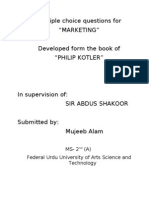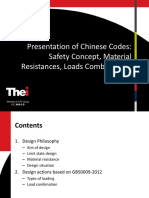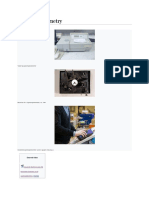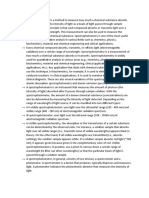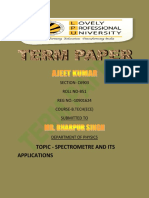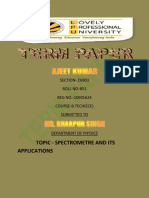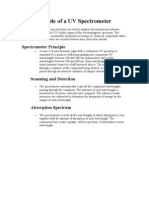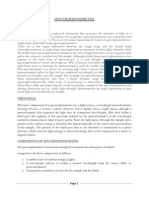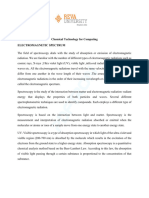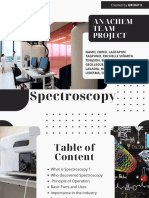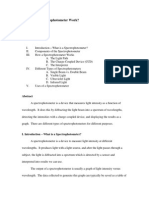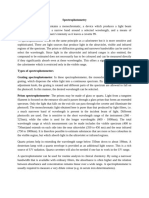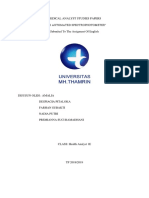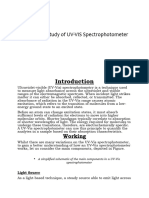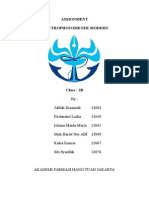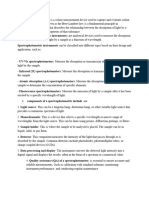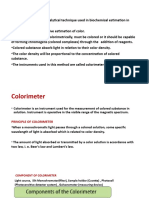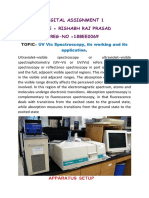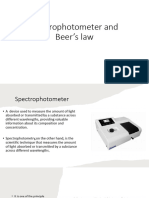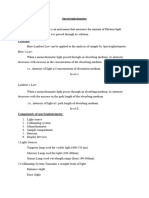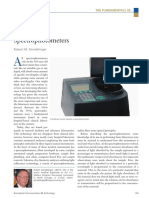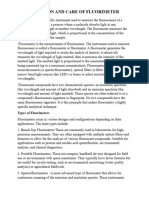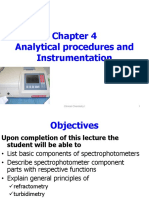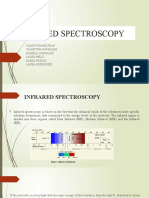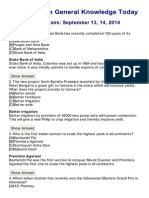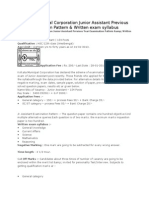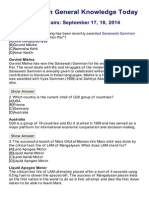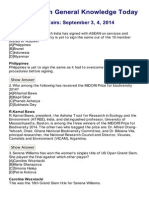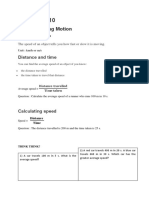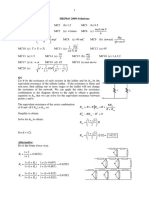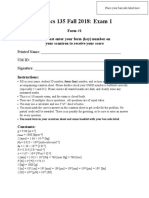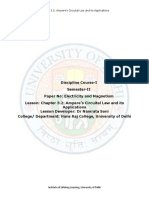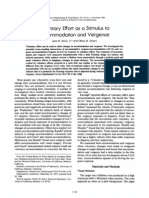0 ratings0% found this document useful (0 votes)
87 viewsSpectro Photo Me Try
Spectro Photo Me Try
Uploaded by
sushil4056Spectro Photo Me Try
Copyright:
© All Rights Reserved
Available Formats
Download as DOCX, PDF, TXT or read online from Scribd
Spectro Photo Me Try
Spectro Photo Me Try
Uploaded by
sushil40560 ratings0% found this document useful (0 votes)
87 views8 pagesSpectro Photo Me Try
Copyright
© © All Rights Reserved
Available Formats
DOCX, PDF, TXT or read online from Scribd
Share this document
Did you find this document useful?
Is this content inappropriate?
Spectro Photo Me Try
Copyright:
© All Rights Reserved
Available Formats
Download as DOCX, PDF, TXT or read online from Scribd
Download as docx, pdf, or txt
0 ratings0% found this document useful (0 votes)
87 views8 pagesSpectro Photo Me Try
Spectro Photo Me Try
Uploaded by
sushil4056Spectro Photo Me Try
Copyright:
© All Rights Reserved
Available Formats
Download as DOCX, PDF, TXT or read online from Scribd
Download as docx, pdf, or txt
You are on page 1of 8
Spectrophotometry
From Wikipedia, the free encyclopedia
(Redirected from Spectrophotometer)
Jump to: navigation, search
This article needs additional citations for verification.
Please help improve this article by adding reliable references. Unsourced material may be challenged
and removed. (July 2008)
Spectrophotometer
In chemistry, spectrophotometry is the quantitative measurement of the reflection or
transmission properties of a material as a function of wavelength.
[1]
It is more specific than the
general term electromagnetic spectroscopy in that spectrophotometry deals with visible light,
near-ultraviolet, and near-infrared, but does not cover time-resolved spectroscopic techniques.
Spectrophotometry involves the use of a spectrophotometer. A spectrophotometer is a
photometer (a device for measuring light intensity) that can measure intensity as a function of the
light source wavelength. Important features of spectrophotometers are spectral bandwidth and
linear range of absorption or reflectance measurement.
Spectrophotometers are commonly used for the measurement of transmittance or reflectance of
solutions, transparent or opaque solids, such as polished glass, or gases. However they can also
be designed to measure the diffusivity on any of the listed light ranges that usually cover around
200nm - 2500nm using different controls and calibrations.
[2]
Within these ranges of light,
calibrations are needed on the machine using standards that vary in type depending on the
wavelength of the photometric determination.
[3]
An example of an experiment in which spectrophotometry is used is the determination of the
equilibrium constant of a solution. A certain chemical reaction within a solution may occur in a
forward and reverse direction where reactants form products and products break down into
reactants. At some point, this chemical reaction will reach a point of balance called an
equilibrium point. In order to determine the respective concentrations of reactants and products
at this point, the light transmittance of the solution can be tested using spectrophotometry. The
amount of light that passes through the solution is indicative of the concentration of certain
chemicals that do not allow light to pass through.
The use of spectrophotometers spans various scientific fields, such as physics, materials science,
chemistry, biochemistry, and molecular biology.
[4]
They are widely used in many industries
including semiconductors, laser and optical manufacturing, printing and forensic examination, as
well in laboratories for the study of chemical substances. Ultimately, a spectrophotometer is able
to determine, depending on the control or calibration, what substances are present in a target and
exactly how much through calculations of observed wavelengths.
Contents
[hide]
1 Design
2 UV-visible spectrophotometry
3 IR spectrophotometry
4 Spectroradiometers
5 See also
6 References
[edit] Design
Single beam spectrophotometer
There are two major classes of devices: single beam and double beam. A double beam
spectrophotometer compares the light intensity between two light paths, one path containing a
reference sample and the other the test sample. A single beam spectrophotometer measures the
relative light intensity of the beam before and after a test sample is inserted. Although
comparison measurements from double beam instruments are easier and more stable, single
beam instruments can have a larger dynamic range and are optically simpler and more compact.
Additionally, some specialized instruments, such as spectrophotometer built onto microscopes or
telescopes, are single beam instruments due to practicality.
Historically, spectrophotometers use a monochromator containing a diffraction grating to
produce the analytical spectrum. The grating can either be movable or fixed. If a single detector,
such as a photomultiplier tube or photodiode is used, the grating can be scanned stepwise so that
the detector can measure the light intensity at each wavelength (which will correspond to each
"step"). Arrays of detectors, such as charge coupled devices (CCD) or photodiode arrays (PDA)
can also be used. In such systems, the grating is fixed and the intensity of each wavelength of
light is measured by a different detector in the array. Additionally, most modern mid-infrared
spectrophotometers use a Fourier transform technique to acquire the spectral information. The
technique is called Fourier Transform Infrared.
When making transmission measurements, the spectrophotometer quantitatively compares the
fraction of light that passes through a reference solution and a test solution. For reflectance
measurements, the spectrophotometer quantitatively compares the fraction of light that reflects
from the reference and test samples. Light from the source lamp is passed through a
monochromator, which diffracts the light into a "rainbow" of wavelengths and outputs narrow
bandwidths of this diffracted spectrum. Discrete frequencies are transmitted through the test
sample. Then the photon flux density (watts per metre squared usually) of the transmitted or
reflected light is measured with a photodiode, charge coupled device or other light sensor. The
transmittance or reflectance value for each wavelength of the test sample is then compared with
the transmission (or reflectance) values from the reference sample.
In short, the sequence of events in a modern spectrophotometer is as follows:
1. The light source is imaged upon the sample.
2. A fraction of the light is transmitted or reflected from the sample
3. The light from the sample is imaged upon the entrance slit of the monochromator
4. The monochromator separates the wavelengths of light and focuses each of them onto the
photodetector sequentially.
Many older spectrophotometers must be calibrated by a procedure known as "zeroing." The
absorbancy of a reference substance is set as a baseline value, so the absorbancies of all other
substances are recorded relative to the initial "zeroed" substance. The spectrophotometer then
displays % absorbancy (the amount of light absorbed relative to the initial substance).
[4]
[edit] UV-visible spectrophotometry
Main article: Ultraviolet-visible spectroscopy
The most common spectrophotometers are used in the UV and visible regions of the spectrum,
and some of these instruments also operate into the near-infrared region as well.
Visible region 400700 nm spectrophotometry is used extensively in colorimetry science. Ink
manufacturers, printing companies, textiles vendors, and many more, need the data provided
through colorimetry. They take readings in the region of every 520 nanometers along the visible
region, and produce a spectral reflectance curve or a data stream for alternative presentations.
These curves can be used to test a new batch of colorant to check if it makes a match to
specifications e.g., ISO printing standards.
Traditional visible region spectrophotometers cannot detect if a colorant or the base material has
fluorescence. This can make it difficult to manage color issues if for example one or more of the
printing inks is fluorescent. Where a colorant contains fluorescence, a bi-spectral fluorescent
spectrophotometer is used. There are two major setups for visual spectrum spectrophotometers,
d/8 (spherical) and 0/45. The names are due to the geometry of the light source, observer and
interior of the measurement chamber. Scientists use this instrument to measure the amount of
compounds in a sample. If the compound is more concentrated more light will be absorbed by
the sample; within small ranges, the Beer-Lambert law holds and the absorbance between
samples vary with concentration linearly. In the case of printing measurements two alternative
settings are commonly used- without/with uv filter to control better the effect of uv brighteners
within the paper stock.
Samples are usually prepared in cuvettes; depending on the region of interest, they may be
constructed of glass, plastic, or quartz.
[edit] IR spectrophotometry
Main article: Infrared spectroscopy
Spectrophotometers designed for the main infrared region are quite different because of the
technical requirements of measurement in that region. One major factor is the type of
photosensors that are available for different spectral regions, but infrared measurement is also
challenging because virtually everything emits IR light as thermal radiation, especially at
wavelengths beyond about 5 m.
Another complication is that quite a few materials such as glass and plastic absorb infrared light,
making it incompatible as an optical medium. Ideal optical materials are salts, which do not
absorb strongly. Samples for IR spectrophotometry may be smeared between two discs of
potassium bromide or ground with potassium bromide and pressed into a pellet. Where aqueous
solutions are to be measured, insoluble silver chloride is used to construct the cell.
[edit] Spectroradiometers
Spectroradiometers, which operate almost like the visible region spectrophotometers, are
designed to measure the spectral density of illuminants in order to evaluate and categorize
lighting for sales by the manufacturer, or for the customers to confirm the lamp they decided to
purchase is within their specifications. Components:
1. The light source shines onto or through the sample.
2. The sample transmits or reflects light.
3. The detector detects how much light was reflected from or transmitted through the
sample.
4. The detector then converts how much light the sample transmitted or reflected into a
number.
[edit] See also
Atomic Absorption Spectrophotometry
Atomic emission spectroscopy
Inductively coupled plasma atomic emission spectroscopy
Inductively coupled plasma mass spectrometry
Spectroradiometry
Slope spectroscopy
[edit] References
1. ^ Allen, D., Cooksey, C., & Tsai, B. (2010, October 5). Spectrophotometry. Retrieved from
http://www.nist.gov/pml/div685/grp03/spectrophotometry.cfm
2. ^ Allen, D., Cooksey, C., & Tsai, B. (2010, October 5). Spectrophotometry. Retrieved from
http://www.nist.gov/pml/div685/grp03/spectrophotometry.cfm
3. ^ Schwedt, Georg. (1997). The Essential Guide to Analytical Chemistry. (Brooks Haderlie,
trans.). Chichester, NY: Wiley. (Original Work Published 1943). pp. 16-17
4. ^
a
b
Rendina, George. Experimental Methods in Modern Biochemistry W. B. Saunders Company:
Philadelphia, PA. 1976. pp. 46-55
[show]v d eLaboratory equipment
Beaker Bchner funnel Burette Cold finger Condenser Conical measure Cuvette
Dropping funnel Eudiometer Gas syringe Graduated cylinder Pipette Petri dish
Pycnometer Separatory funnel Soxhlet extractor Watch glass
Flasks
Bchner Erlenmeyer Fleaker Florence Retort Round-bottom Schlenk
Volumetric
TubesBoiling Ignition NMR Test Thiele Thistle
[show]v d eScience instruments on satellites and spacecraft
Microwave Near Earth satellite
Envisat MIRAS SMOS CERES TRMM,
TERRA, AQUA AMSR-E (AQUA) SMMR
SeasatNimbus 7 SSM/I DMSP 5D-2/F13-F15
SSMIS DMSP 5D-2/F16
Infrared (IR)
Near Earth satellite
ASTER TERRA MOPITT (TERRA) AIRS
AQUA
Interplanetary
Mariner 6 Mariner 7 Mariner 10 IRIS
(Voyager 1, Voyager 2)
Ultraviolet (UV) Near Earth satellite LYRA (Proba-2)
Long wavelength Interplanetary ISO
Visible-IR (VIRS)
Near Earth satellite TRMM
Interplanetary
Mariner 6 Mariner 7 MASCS AKARI ISO
SPICAM) SPICAV IRIS (Voyager 1, Voyager
2) MERIS Envisat SCIAMACHY Envisat
UV-visible (UVVS) Interplanetary
Mariner 6 Mariner 7 Mariner 10 Voyager 1
Voyager 2 SPICAM SPICAV MASCS
Near Earth satellite GOES QuakeSat 1 and 2 SGVM (Proba-2)
Interplanetary Voyager 1 Voyager 2
Triaxial fluxgateInterplanetary
Mariner 2 Mariner 4 Mariner 5 Mariner 10
Cassini-Huygens Venus Express MESSENGER
Magsat
Helium vapor
1, 2
Interplanetary Cassini-Huygens
Ion detectors
Near Earth TPMU and DSLP (Proba-2) DEMETER
Interplanetary
Ulysses SPS Mariner 2 ASPERA-3
ASPERA-4
Neutral particle detector Interplanetary
Ulysses SPS Mariner 2 ASPERA-3
ASPERA-4
Retrieved from "http://en.wikipedia.org/wiki/Spectrophotometry"
Categories: Spectroscopy
Hidden categories: Articles needing additional references from July 2008 | All articles needing
additional references
Personal tools
Log in / create account
Namespaces
Article
Discussion
Variants
Views
Read
Edit
View history
Actions
Search
Special:Search
Search
Navigation
Main page
Contents
Featured content
Current events
Random article
Donate to Wikipedia
Interaction
Help
About Wikipedia
Community portal
Recent changes
Contact Wikipedia
Toolbox
What links here
Related changes
Upload file
Special pages
Permanent link
Cite this page
Print/export
Create a book
Download as PDF
Printable version
Languages
esky
Dansk
Deutsch
Espaol
Franais
Bahasa Indonesia
Italiano
Nederlands
Occitan
Polski
Portugus
Simple English
Suomi
Ting Vit
This page was last modified on 28 February 2011 at 07:02.
Text is available under the Creative Commons Attribution-ShareAlike License;
additional terms may apply. See Terms of Use for details.
Wikipedia is a registered trademark of the Wikimedia Foundation, Inc., a non-profit
organization.
Contact us
Privacy policy
About Wikipedia
Disclaimers
You might also like
- Marketing Multiple Choice Questions With Answers.Document43 pagesMarketing Multiple Choice Questions With Answers.Mujeeb Alam80% (66)
- Spektro (1,2)Document16 pagesSpektro (1,2)Asnita HfsaniNo ratings yet
- Transmission Hardware CompanyDocument75 pagesTransmission Hardware CompanyAnonymous wx4I4YQONo ratings yet
- Control of The Natural ForcesDocument4 pagesControl of The Natural ForcesNullpunktsenergie100% (9)
- Presentation of Chinese Codes Safety Concept, Material Resistance, Load CombinationsDocument66 pagesPresentation of Chinese Codes Safety Concept, Material Resistance, Load CombinationsdaeealiNo ratings yet
- Report Ni RizaDocument8 pagesReport Ni RizaInga Budadoy NaudadongNo ratings yet
- Spectro Photo Me TryDocument5 pagesSpectro Photo Me Trykapil sharmaNo ratings yet
- SpectrophotometryDocument5 pagesSpectrophotometryKashifntcNo ratings yet
- BCH 315 First Lecture NoteDocument12 pagesBCH 315 First Lecture Notemichaelokuchukwu22No ratings yet
- SpectrophotometryDocument7 pagesSpectrophotometrySantanah Daxene DayloNo ratings yet
- Org ChemDocument8 pagesOrg ChemAnam MustafaNo ratings yet
- Research On The Instrumental Designs of Spectrophotometrer-2Document20 pagesResearch On The Instrumental Designs of Spectrophotometrer-2silvyas.abdalshahedNo ratings yet
- Veer Chandrasingh Garhwali Uttarakhanduniversity of Horticulture and ForestryDocument6 pagesVeer Chandrasingh Garhwali Uttarakhanduniversity of Horticulture and ForestrySimranNo ratings yet
- SPECTROSDocument4 pagesSPECTROSuthmanabdulazeez12No ratings yet
- Photo MeterDocument4 pagesPhoto MeterRKMNo ratings yet
- 88Document57 pages88Nilesh MaitiNo ratings yet
- Topic - Spectrometre and Its Applications: SECTION-C6903 Roll No-B51 REG NO.-10901624 Course-B.Tech (Ece) Submitted ToDocument20 pagesTopic - Spectrometre and Its Applications: SECTION-C6903 Roll No-B51 REG NO.-10901624 Course-B.Tech (Ece) Submitted ToNimit ChauhanNo ratings yet
- Topic - Spectrometre and Its Applications: SECTION-C6903 Roll No-B51 REG NO.-10901624 Course-B.Tech (Ece) Submitted ToDocument20 pagesTopic - Spectrometre and Its Applications: SECTION-C6903 Roll No-B51 REG NO.-10901624 Course-B.Tech (Ece) Submitted ToAman Kumar100% (2)
- Spectro Photo Me TryDocument5 pagesSpectro Photo Me TrySaravanapriya KarthikNo ratings yet
- The Principle of A UV SpectrometerDocument4 pagesThe Principle of A UV SpectrometerVignesh AmrNo ratings yet
- UV-Vis Spectroscopy - Principle, Strengths and Limitations and ApplicationsDocument19 pagesUV-Vis Spectroscopy - Principle, Strengths and Limitations and ApplicationsSajjad AliNo ratings yet
- SPECTROPHOTOMETERDocument5 pagesSPECTROPHOTOMETERKokab KhanNo ratings yet
- Spectrophotometer-Principle, Instrumentation, Applications: What Is A Spectrophotometer?Document2 pagesSpectrophotometer-Principle, Instrumentation, Applications: What Is A Spectrophotometer?Talhas Production100% (1)
- tmp3588122518401173628 PrintDocument25 pagestmp3588122518401173628 Printjosephusjohn009No ratings yet
- Anachem Group 3 SpectrosDocument15 pagesAnachem Group 3 SpectrosApufwplggl JomlbjhfNo ratings yet
- Group 4 Ultraviolet Visible SpectrosDocument6 pagesGroup 4 Ultraviolet Visible SpectrosJane Frances JabricaNo ratings yet
- How Does A Spectrophotometer WorkDocument10 pagesHow Does A Spectrophotometer WorkDuc Nguyen ManhNo ratings yet
- SpectrophotometryDocument2 pagesSpectrophotometryMiracle IreneNo ratings yet
- Tugas B Ingg Ke 2Document6 pagesTugas B Ingg Ke 2Wirda AffiyantiNo ratings yet
- Practical 7: Study of UV-VIS Spectrophotometer: Light SourceDocument8 pagesPractical 7: Study of UV-VIS Spectrophotometer: Light SourceAkshath DubeyNo ratings yet
- Ultra Violet - Visible SpectrosDocument13 pagesUltra Violet - Visible SpectrosSherin SunnyNo ratings yet
- Assignment Spectrophotometer ModernDocument21 pagesAssignment Spectrophotometer ModernBaim Black RushNo ratings yet
- Spectrophotometry 1Document3 pagesSpectrophotometry 1Christina AtefNo ratings yet
- Introduction To SpectrosDocument24 pagesIntroduction To SpectrosPIRZADA TALHA ISMAIL100% (1)
- Instrumentation MethodsDocument42 pagesInstrumentation MethodsANZC-chetana singhNo ratings yet
- Introduction To SpectrosDocument31 pagesIntroduction To Spectross11925877No ratings yet
- Spectrophotometer MCQDocument28 pagesSpectrophotometer MCQSanjay YadavNo ratings yet
- Spectrophotometric Instruments Can Be Classified Into Different Types Based On Their Design andDocument2 pagesSpectrophotometric Instruments Can Be Classified Into Different Types Based On Their Design andAbdirazak AliNo ratings yet
- Spectrophotometry: UV-visible Spectrophotometer: Uses Light Over The Ultraviolet Range (185Document3 pagesSpectrophotometry: UV-visible Spectrophotometer: Uses Light Over The Ultraviolet Range (185azeem999No ratings yet
- Introduction To Molecular Spectroscopy: By: M.Z.IqbalDocument24 pagesIntroduction To Molecular Spectroscopy: By: M.Z.IqbalMuhammad TausifNo ratings yet
- Infrared SpectrosDocument8 pagesInfrared SpectrosMuhammad Ahsan AftabNo ratings yet
- Final Colorimeter SpectrophotometerDocument19 pagesFinal Colorimeter SpectrophotometerDr Izza AyubNo ratings yet
- Digital Assignment 1 Name Rishabh Raj Prasad REG-NO 18BEE0069Document7 pagesDigital Assignment 1 Name Rishabh Raj Prasad REG-NO 18BEE0069Kumar RishabhNo ratings yet
- Different Techniques of AnalysisDocument7 pagesDifferent Techniques of Analysisvlokesh9989No ratings yet
- Microspectrofluorimetry of Fluorescent Dyes and Brighteners On Single Textile FibresDocument18 pagesMicrospectrofluorimetry of Fluorescent Dyes and Brighteners On Single Textile FibresAnastasiya AlexandrovaNo ratings yet
- Module 6Document7 pagesModule 6Sri Meenakshi KSNo ratings yet
- UV Spectroscopy - Principle, Instrumentation, Applications - Instrumentation - Microbe NotesDocument5 pagesUV Spectroscopy - Principle, Instrumentation, Applications - Instrumentation - Microbe NotesIJAJ-PHARMA TUTOR100% (4)
- Fluorescence SpectrosDocument2 pagesFluorescence SpectrosRishi SinghNo ratings yet
- Uv-Vis Spectroscopy ThesisDocument4 pagesUv-Vis Spectroscopy ThesisCustomCollegePaperUK100% (2)
- Final LabDocument202 pagesFinal Labshahedalamour3No ratings yet
- Services Copy: Idaho State Police Forensic Laboratory Training Manual Infared SpectrophotometryDocument9 pagesServices Copy: Idaho State Police Forensic Laboratory Training Manual Infared SpectrophotometryMark ReinhardtNo ratings yet
- SpectrophotometerDocument4 pagesSpectrophotometersoroutaditya04No ratings yet
- Spectrophotometers: Robert M. DondelingerDocument6 pagesSpectrophotometers: Robert M. DondelingerJorge SaenzNo ratings yet
- A fluorimeter is a scientific instrument used to measure the fluorescence of a sampleDocument10 pagesA fluorimeter is a scientific instrument used to measure the fluorescence of a samplemusediqmuizNo ratings yet
- Calorimeter and Spectrophotometer NotesDocument13 pagesCalorimeter and Spectrophotometer Notesbalozirobert254No ratings yet
- Polymer Analysis by UVDocument10 pagesPolymer Analysis by UVnethumini GunawardanaNo ratings yet
- Chapter 4 Analytical Procedures and InstrumentataionDocument40 pagesChapter 4 Analytical Procedures and InstrumentataionDaniel JirataNo ratings yet
- Photodiode I1: UU-VIS SpectrosDocument8 pagesPhotodiode I1: UU-VIS SpectrosVăn MyNo ratings yet
- Spectrophotometer: - Class: 1ADocument12 pagesSpectrophotometer: - Class: 1Aniken larasatiNo ratings yet
- UV SpectrosDocument4 pagesUV SpectrosCarlton GrantNo ratings yet
- Diapositivas Ing. MaterialesDocument44 pagesDiapositivas Ing. MaterialesnataliaNo ratings yet
- Application of Spectral Studies in Pharmaceutical Product development: (Basic Approach with Illustrated Examples) First Revised EditionFrom EverandApplication of Spectral Studies in Pharmaceutical Product development: (Basic Approach with Illustrated Examples) First Revised EditionNo ratings yet
- Multispectral Imaging: Unlocking the Spectrum: Advancements in Computer VisionFrom EverandMultispectral Imaging: Unlocking the Spectrum: Advancements in Computer VisionNo ratings yet
- Photoelectron Spectroscopy: Bulk and Surface Electronic StructuresFrom EverandPhotoelectron Spectroscopy: Bulk and Surface Electronic StructuresNo ratings yet
- Association of Management of MBA - MMS Institutes.1Document75 pagesAssociation of Management of MBA - MMS Institutes.1sushil4056No ratings yet
- ArtistsDocument12 pagesArtistssushil4056No ratings yet
- Synergy Summit-Poster FinalDocument1 pageSynergy Summit-Poster Finalsushil4056No ratings yet
- Abbreviations For Competition ExamsDocument19 pagesAbbreviations For Competition ExamsarunsanskritiNo ratings yet
- QuestionsDocument3 pagesQuestionssushil4056No ratings yet
- General Knowledge Today - 3Document3 pagesGeneral Knowledge Today - 3sushil4056No ratings yet
- Kolkata Municipal Corporation Junior Assistant Previous Year Examination Pattern & Written Exam SyllabusDocument2 pagesKolkata Municipal Corporation Junior Assistant Previous Year Examination Pattern & Written Exam Syllabussushil4056No ratings yet
- General Knowledge TodayDocument4 pagesGeneral Knowledge Todaysushil4056No ratings yet
- Input - OutputDocument15 pagesInput - Outputsushil4056No ratings yet
- SBI Clerks 2014 Syllabus PDFDocument4 pagesSBI Clerks 2014 Syllabus PDFsushil4056No ratings yet
- General Knowledge Today 2 2Document3 pagesGeneral Knowledge Today 2 2sushil4056No ratings yet
- Computer AwarenessDocument8 pagesComputer Awarenesssushil4056No ratings yet
- Coding Decoding PDFDocument4 pagesCoding Decoding PDFsushil4056No ratings yet
- Cyber Crime ReportDocument6 pagesCyber Crime Reportsushil4056No ratings yet
- Case Study - LDRDocument2 pagesCase Study - LDRhuda_28No ratings yet
- Show That The Equation X + 10x + 3 0 Has Exactly One Real RootDocument2 pagesShow That The Equation X + 10x + 3 0 Has Exactly One Real RootAkhil RajNo ratings yet
- CBSU SAE PaperDocument8 pagesCBSU SAE PaperSanjeev MahajanNo ratings yet
- 9817 - Manual On Wind Shear 2005Document213 pages9817 - Manual On Wind Shear 2005Huy Thanh NguyenNo ratings yet
- Matlab 2Document40 pagesMatlab 2Husam AL-QadasiNo ratings yet
- Working With MicrospheresDocument20 pagesWorking With MicrospheresSreeman MypatiNo ratings yet
- Ultrasonic Lamb WaveDocument12 pagesUltrasonic Lamb WaveMohsin IamNo ratings yet
- Osisense Xs Xs612b1nal2Document2 pagesOsisense Xs Xs612b1nal2TB11SDNo ratings yet
- Calculation and Design of Exhaust Noise Mufflers For Power Engineering EquipmentDocument10 pagesCalculation and Design of Exhaust Noise Mufflers For Power Engineering EquipmenthenrengNo ratings yet
- Life Is A Full Circle, Widening Until It Joins The Circle Motions of The InfiniteDocument23 pagesLife Is A Full Circle, Widening Until It Joins The Circle Motions of The InfiniteRaghav AroraNo ratings yet
- CHAPTER 10 SC Measuring MotionDocument7 pagesCHAPTER 10 SC Measuring MotionEunice Xiiao Wenn100% (2)
- HFSS Radar Cross SectionDocument33 pagesHFSS Radar Cross SectionMohamad SalehNo ratings yet
- GemsDocument80 pagesGemssaopaulo100% (1)
- X Y MGL: Hkpho 2009 SolutionsDocument4 pagesX Y MGL: Hkpho 2009 SolutionsegorrepperNo ratings yet
- BHEL Specification Sheet TDC.0.304 Rev01Document2 pagesBHEL Specification Sheet TDC.0.304 Rev01Naresh GoudNo ratings yet
- Physics 135 Fall 2018 Exam 1 Form 1Document21 pagesPhysics 135 Fall 2018 Exam 1 Form 1Rubab ImtiazNo ratings yet
- Design of A Fourier Transform Spectrometer For High Resolution SpectroscopyDocument6 pagesDesign of A Fourier Transform Spectrometer For High Resolution Spectroscopyገዛኽኝ ሱፋNo ratings yet
- Chapter 3.2 Ampere's Circuital Law and Its ApplicationsDocument22 pagesChapter 3.2 Ampere's Circuital Law and Its ApplicationsHarsh Mehta50% (2)
- MoC - Water HammerDocument5 pagesMoC - Water HammerRaef kobeissiNo ratings yet
- Some Parametric Solutions To The Navier-Lame Equation in Cylindrical Coordinates Using Buchwald Displacement PotentialsDocument30 pagesSome Parametric Solutions To The Navier-Lame Equation in Cylindrical Coordinates Using Buchwald Displacement PotentialsraveneyesdeadNo ratings yet
- Chem 142 Midterm I Score PageDocument2 pagesChem 142 Midterm I Score Pageapi-487250325No ratings yet
- Bi Material BeamDocument22 pagesBi Material BeamPraveen KumaarNo ratings yet
- Pro e Surface ModelingDocument21 pagesPro e Surface ModelingRahul100% (1)
- Voluntary Effort As A Stimulus To Accommodation and VergenceDocument8 pagesVoluntary Effort As A Stimulus To Accommodation and VergenceRicardo BarretoNo ratings yet
- MCE 366 System Dynamics, Spring 2010 Problem Set 1Document8 pagesMCE 366 System Dynamics, Spring 2010 Problem Set 1MartinRodriguezNo ratings yet
- Study of Lateral Load Resisting Systems at Variable HeightsDocument82 pagesStudy of Lateral Load Resisting Systems at Variable Heightsmuhammadadeelehsan100% (1)
